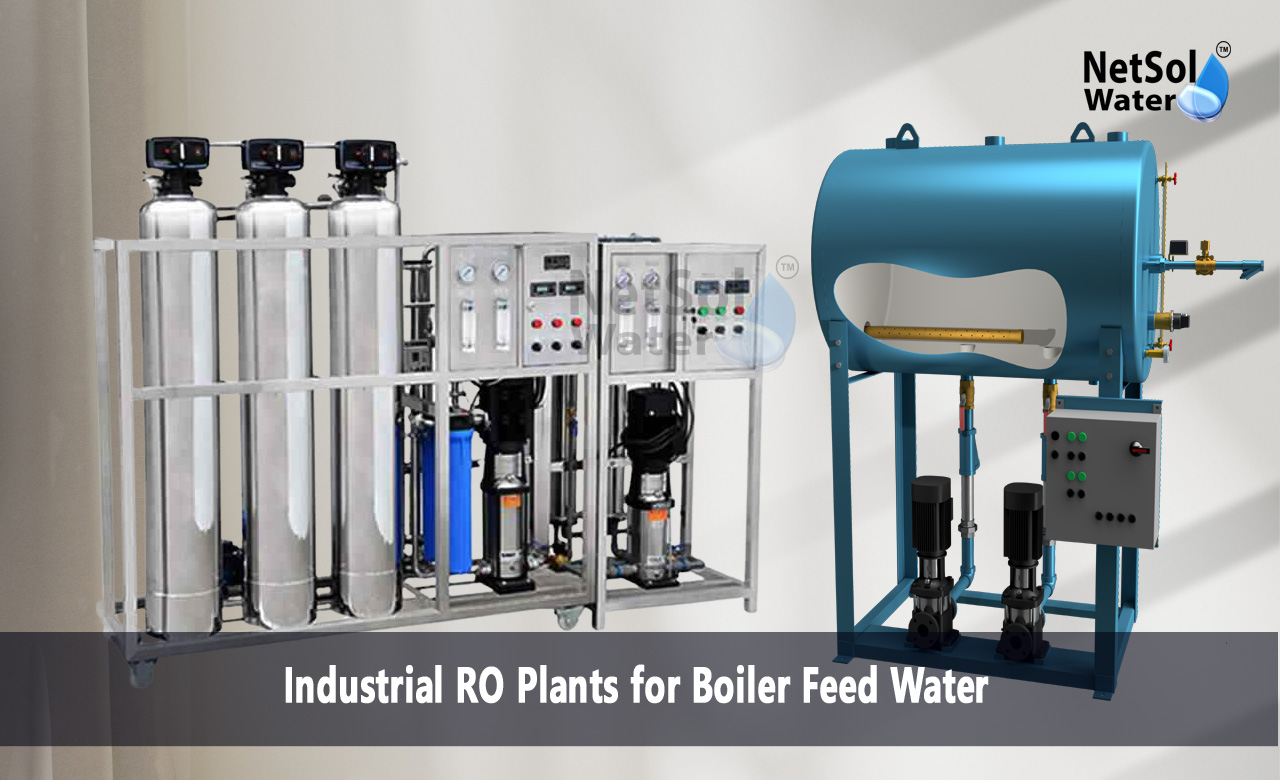Industrial RO Plants for Boiler Feed Water
Water drives industrial operations, especially in boiler systems. Boiler water quality influences efficiency, energy costs, and equipment longevity. Industrial RO plants have transformed how companies treat boiler feed water.
We will discuss industrial RO plants and their significance in preparing boiler water.
The Basics of Boiler Feed Water
Let's start with the essentials. Boilers use feed water to generate steam. The quality of this water matters a lot. Low-quality feed water creates problems such scale formation, corrosion, and poor heat transfer efficiency.
Industries employed several water treatment processes for boiler feed water in the past. These included chemical treatments, softening, and deionization. While they functioned, these methods often overlooked some contaminants, notably dissolved solids. RO technology gives a more complete solution.
Understanding Reverse Osmosis
Reverse osmosis might sound sophisticated, but its premise is simple. RO filters water by employing a semi-permeable membrane to remove ions, molecules, and bigger particles.
How It Works?
Picture a container split by a unique membrane. Dirty water sits on one side, pure water on the other. Normally, water would flow from the clean side to the dirty side to balance things out. That's osmosis. Reverse osmosis flips this process.
An RO plant applies pressure to the dirty water side. This drives water molecules across the barrier while leaving impurities behind. The result? You receive exceedingly pure water on one side and concentrated waste (brine) on the other.
Components of an Industrial RO Plant
An industrial RO plant involves more than just a membrane. It employs a complicated system with numerous important parts:
1. Pretreatment Systems
Water undergoes preparation before reaching the RO membrane. This stage eliminates bigger particles and some substances that could affect the membrane. Pretreatment usually involves:
- Filtration: This eliminates suspended solids
- Chemical dosing: It balances pH and avoids scaling
- Antiscalant addition: This stops minerals from building up on the membrane
2. High-Pressure Pump
This pump powers the RO plants. It provides the pressure needed to drive water through the membrane. The needed pressure vary based on water salinity and desired purification level.
3. RO Membrane
The RO membrane does the main work. These membranes use thin-film composite materials with small pores. They can reject particles as small as 0.0001 micron.
4. Post-treatment System
The water might need final modifications after going through the membrane. This could include correcting pH, bringing minerals back, or disinfection, depending on what the boiler system needs.
5. Control and Monitoring Systems
Modern RO plants require complex control mechanisms. These watch water quality, flow rates, pressure, and other essential aspects. They ensure optimal functioning and spot faults early.
Benefits of Using RO Plants for Boiler Feed Water
Now that we understand how RO plants work, let's look at why they've become the top choice for treating boiler feed water.
1. Superior Water Quality
RO plants remove up to 99% of dissolved solids, salts, organics, microorganisms, and pyrogens. This level of filtration beats standard treatment procedures, resulting in very high-quality boiler feed water.
2. Reduced Chemical Usage
RO reduces the need for chemical treatments. This saves operational costs and lessens the environmental effect of water treatment systems.
3. Increased Boiler Efficiency
Cleaner water leads to less scale formation and corrosion in boiler systems. This enhances heat transfer efficiency, minimizes maintenance needs, and extends equipment life.
4. Consistent Water Quality
RO plants deliver consistent water quality despite variations in the source water. This stability helps ensure maximum boiler performance.
5. Automation and Reliability
Modern RO plants work mostly automatically, needing little user input. This boosts reliability and minimizes chances of human error in water treatment operations.
Designing a RO Plant for Boiler Feed Water
Designing a RO plant for boiler feed water requires careful consideration of different factors:
1. Source Water Analysis
First, you need to analyze the source water thoroughly. This includes evaluating total dissolved solids (TDS), hardness, pH levels, and particular pollutants.
2. Boiler Requirements
Varying boilers demand varying feed water quality. High-pressure boilers, for example, often demand water with very low TDS levels.
3. Plant Capacity
The RO plant must supply the boiler's water demand, especially during peak usage periods.
4. Pretreatment Needs
Based on source water quality, you must build appropriate pretreatment systems to protect RO membranes and improve their performance.
5. Post-treatment Considerations
Depending on boiler specifications, RO-treated water can need extra conditioning, including pH adjustment or remineralization.
6. Waste Management
You must establish a plan for handling the concentrated waste stream (brine) that complies with local requirements.
Conclusion
Industrial RO plants have altered boiler feed water treatment, giving unparalleled water purity, better efficiency, and less environmental effect. While problems exist, RO technology's benefits outweigh the negatives for most industrial applications.As we face increasing water constraint and environmental issues, innovative water treatment technologies like RO will grow more crucial. For enterprises depending on boilers, investing in a well-designed and regularly maintained RO plant is a strategic imperative for long-term sustainability and operational effectiveness.
To explore customised commercial RO plants, Industrial RO plants, ETP or STP solutions for your needs in your areas and nearby regions, contact Netsol Water at:
Phone: +91-965-060-8473, Email: enquiry@netsolwater.com



